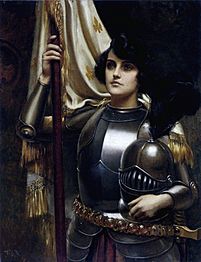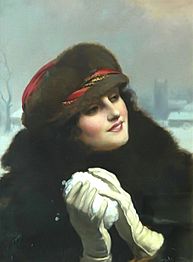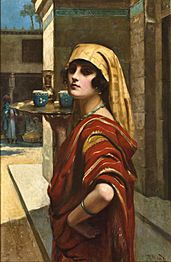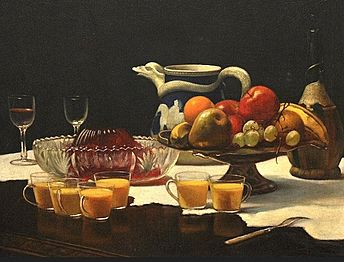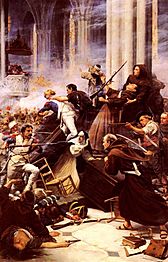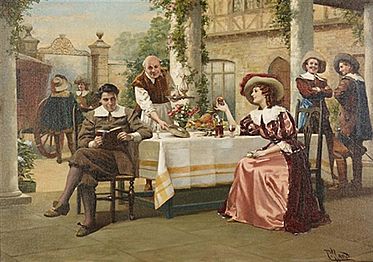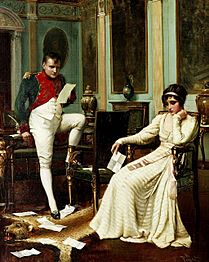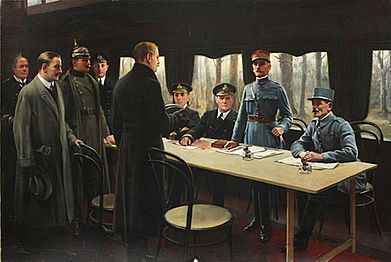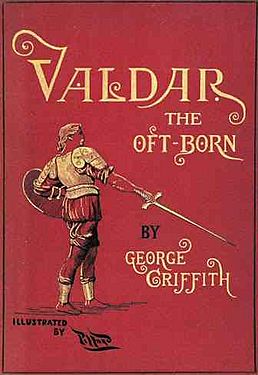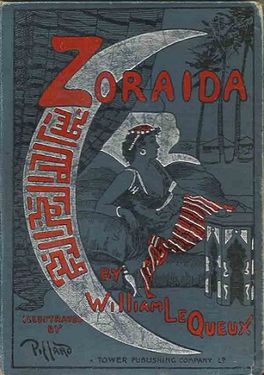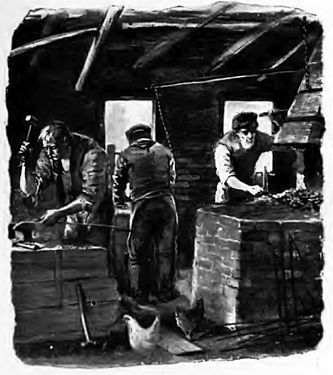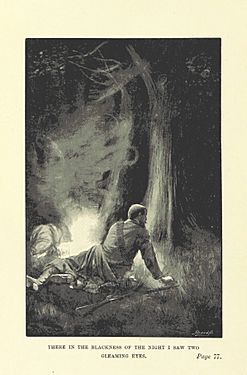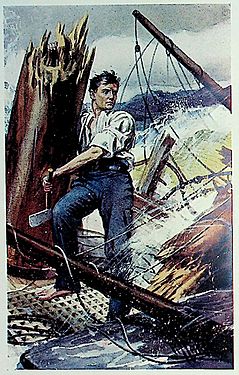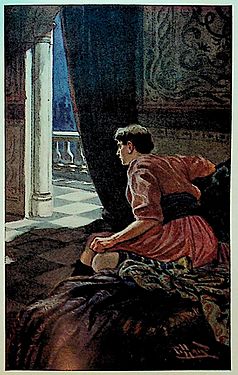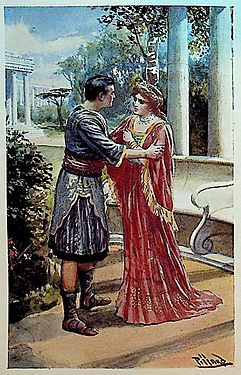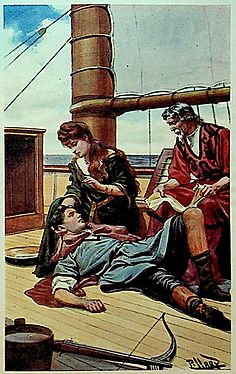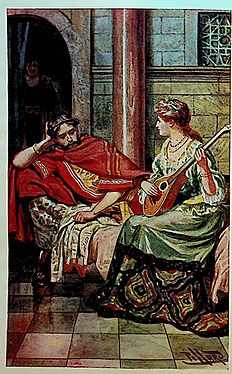Harold H. Piffard facts for kids
Quick facts for kids
Harold H. Piffard
|
|
|---|---|
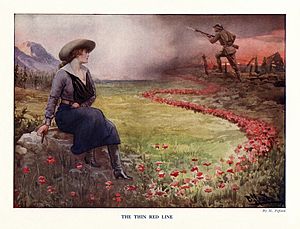
The Thin Red Line by Harold H. Piffard
|
|
| Born | 10 August 1867 33 Blandford Square, Marylebone, London
|
| Died | 17 January 1938 (aged 70) |
| Resting place | Old Chiswick Cemetery |
| Nationality | British |
| Known for | Artist, aviator and illustrator |
| Movement | Orientalism |
| Spouse(s) |
Helena Katherine Docetti Walker
(m. 1895; died 1900)Eleanor Margaret Hoile
(m. 1902) |
Harold Hume Piffard (10 August 1867 – 17 January 1938) was a British artist, illustrator, and one of the first British aviators.
Contents
Personal life
Harold Hume Piffard was born in Marylebone to Charles Piffard (4 July 1829 – 2 July 1884) and his wife Emily, née Hume (1837 – 1911), the daughter of James Hume, a barrister and Magistrate at Calcutta. They had married in Calcutta on 1 June 1858. Charles had received his BA at Clare College, Cambridge in 1848, was called to the Bar on 17 November 1854, and was awarded an MA from Clare College on 30 June 1856. Charles was Clerk of the Crown in the High Court of Calcutta. Piffard's four eldest brothers had all been born in India.
Piffard was the couple's sixth son. He was educated at Lancing College, being sent there together with his older brother Lawrence in 1877. He was still there at the time of the 1881 census. A year earlier he had run away from school to find employment on the stage, sleeping on the Embankment for several nights while he visited theatres and music halls. He travelled to India in February 1884 then spent some time travelling in India and working on a tea plantation. In 1889, he returned to London and began to study art at the Royal Academy Schools, and he exhibited his first painting at the Royal Academy in 1895. His address was then 5 Fitzroy Square, St Pancras.
A month later, on 4 June 1895, he married Helena Katherine Docetti Walker (1 August 1871 – 27 November 1900)—the daughter of Peter Geddes Walker (13 December 1833 – 28 May 1896), a jute manufacturer, and a naturalised German, Margaretha (Meta) Docetti (c. 1837 – 19 October 1897)—at St John's Free Church in Dundee. At the time of his marriage his address was 29 Cambridge Avenue, Maida Vale, North London. He was at the same address a year later in August 1896 when he was burgled. However, the 1899 Electoral register shows him living at 18 Addison Road, Bedford Park, Chiswick, London, where he remained until he died.
Piffard and Helena had four children:
- Harold Reginald Grahame Sherard Piffard(28 May 1896 – 7 June 1917): He emigrated to New Zealand for his health before the outbreak of the war. He worked for the Lone and Mercantile Agency as a clerk. He enlisted in New Zealand on 8 February 1916, and was killed in France in the following year.
- Dorothy Helena Hume Piffard(19 March 1898 – 7 May 1969): The 1939 England and Wales Register shows her as an artist-painter, living at her parents' old address at 18 Addison Road.
- Ivan Adrian Augustus Piffard(5 November 1899 – 27 February 1993): Like his father, he was the victim of burglary.
- Grahame Laurence Piffard (November 1900 – 12 February 1901): Died at three months of age and is buried with his parents in Old Chiswick Cemetery.
Helena died soon after the birth of her fourth child, Grahame, in 1900. Harold married again on 8 January 1902, again in Scotland, but at the St. Giles Cathedral (Church of Scotland) in Edinburgh rather than the Free Church this time. His bride was Eleanor Margaret Hoile (17 April 1871 – 20 December 1953), the daughter of John Hoile (c. 1840 – 16 December 1877) another jute merchant (deceased) and Catherine Robertson Kirkland (c. 1843 – 12 September 1911)). Piffard and Eleanor had one son.
- Hume Piffard (28 July 1905 – 12 September 1976) Hume trained as an engineer and married Mabel Nancy Sothers in St Paul's Cathedral (Church of England) in Calcutta on 24 February 1940.
Piffard died on 17 January 1938; he is buried in Old Chiswick Cemetery, as is his first wife Helena. His second wife Eleanor survived him for nearly 20 years.
Aviator
First flights in Acton
Piffard began making model aircraft in 1907, winning a prize for one of them at Olympia in 1909. He began to fly in 1909, using an 8-cylinder 40 horsepower ENV 'D' engine and building the airframe in his studio; he rented a shed on Back Common Road, Turnham Green near his home to assemble the aircraft, which was a biplane with elevator in front of the wing, and a variable-pitch propeller. From September 1909 he tested the aircraft on a rented field in Ealing to the west of Masons Lane at what was then Hangar Hill Farm (not the same as the later Acton Aerodrome, which was on the other side of Masons Lane). He managed to get the plane airborne and fly "a foot or two from the ground for a distance of a hundred yards or so." However, on 3 December 1909 the aircraft and its marquee hangar were destroyed in a storm.
Flying at Shoreham
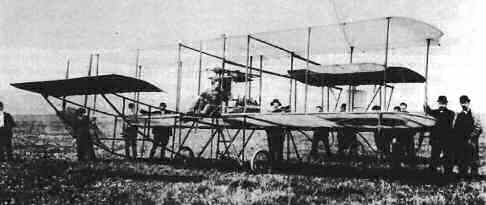
Piffard then co-founded (with George Wingfield, a lawyer) the Aviator's Finance Company, which took out a lease on land at Shoreham-by-Sea near his old school, Lancing College, which already possessed a hangar. With Edouard Baumann and two assistants, they reworked the aircraft's design and had Hummingbird ready on 3 May 1910. It was able to take off in short hops, earning it the nickname of "The Grasshopper"; it frequently crashed because of the hidden ditches in the grass. In September 1910 he flew at a height of 30 or 40 feet for half a mile, managing to fly right across the field to a nearby hotel, The Sussex Pad "in about 40 seconds". He had not learnt how to turn the plane in the air, and the plane had to be wheeled back to the hangar, as there was no space to take off near the hotel, but he celebrated with champagne all the same.
A local cinematograph company asked to film a flight, and he confidently accepted; Colin Manton describes this as characteristic hubris. Ignoring warnings of a dangerous ditch, he tried to fly over it, destroying the aircraft in a "comprehensive smash" which was recorded on film. The cameraman noted that Piffard still "seemed in no way disappointed; in fact, I thought I saw a gleam of satisfaction in his eye".
In 1911 Piffard unsuccessfully tested a new aircraft, the Piffard Hydroplane, which had floats as well as wheels, on Shoreham beach. He developed no more aircraft and did not attempt to fly again, working as an artist and illustrator. The land at Shoreham became Shoreham Airport.
Artist
Painter
Piffard painted a wide variety of subjects in both oils and watercolour.
Illustrator
Piffard started his work as an illustrator with contributions to periodicals including The Strand Magazine, The Illustrated London News and The Penny Pictorial Magazine. He began to illustrate books in 1895, eventually illustrating over a hundred novels by authors including Frances Hodgson Burnett, Guy Boothby, Harry Collingwood, Mrs. Henry Wood, Richard Marsh, Max Pemberton, and J. M. Neale, as well as a series of classics for Collins including works by Thackeray, Dickens, and George Eliot.
-
Interior of a Bromsgrove Nailmaker's shed, 1896
Example of a full set of illustrations
The following set of six illustrations were made by Piffard for Geoffrey Harrington's Adventures by Harry Collingwood. This was published by the Society for Promoting Christian Knowledge in 1907.
Legacy
In 2007 the Shoreham Airport Historical Association built a replica of Piffard's Hummingbird.
Images for kids
See also
 In Spanish: Harold H. Piffard para niños
In Spanish: Harold H. Piffard para niños



